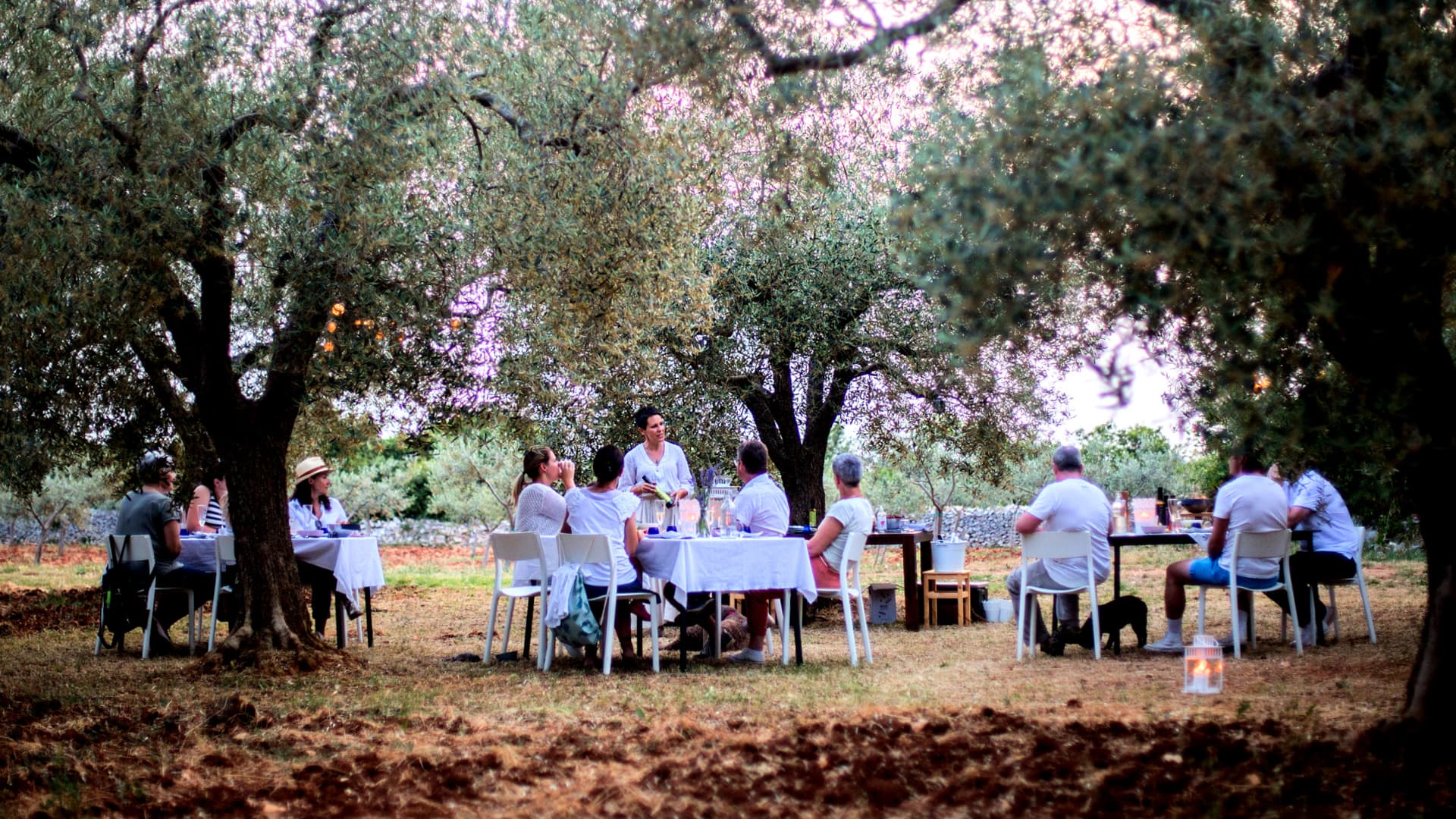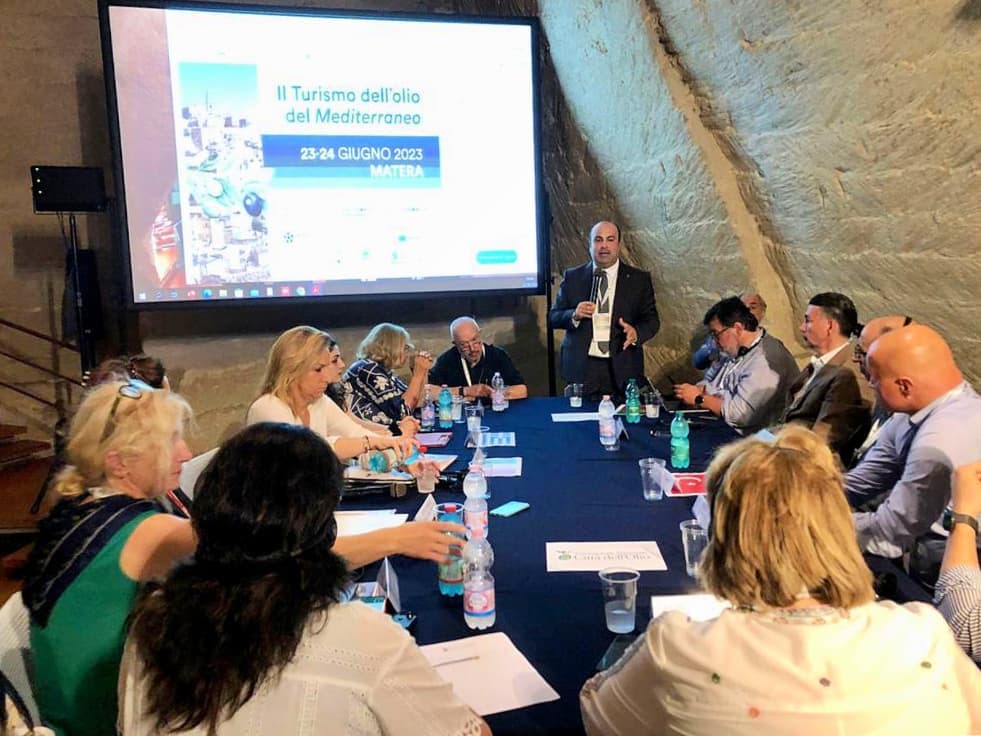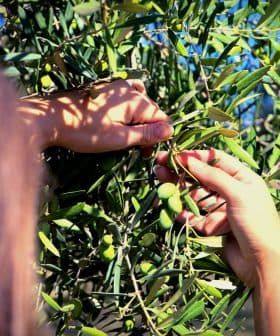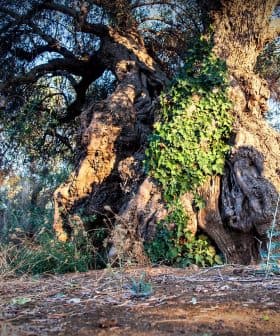Istrian Officials Share Oleotourism Insights at Events in Spain and Italy

Istria’s extra virgin olive oil has seen a significant rise in global recognition, with the region undergoing an olive-growing revolution in the past 30 years. Istrian producers have been successful in promoting their high-quality olive oils internationally, leading to increased demand and the development of oleotourism in the region.
Nothing succeeds like success, and the meteoric rise of Istria’s extra virgin olive oil on the global stage is a prime example.
Along with Italy’s Lake Garda, Istria is among the northernmost olive-growing regions of the Mediterranean basin. The northwestern Croatian peninsula has undergone an olive-growing revolution in the past 30 years.
“From a total of 254,000 trees, through intensive planting, today we have reached around 1.8 million trees,” Denis Ivošević, director of the Tourist Board of Istria County, told Olive Oil Times.
See Also:Tourists of All Ages Are Heading to Groves and Mills This SummerIn parallel with new plantations and agrotechnical measures, farmers and millers have been trained to produce, label and market high-quality extra virgin olive oil.
Part of the effort to promote their products internationally comes from the significant participation of Istrian producers at international competitions.
More than half of the 105 awards earned by Croatian producers at the 2023 NYIOOC World Olive Oil Competition, the world’s largest quality contest, came from Istria. This figure has steadily risen over the years.
“We are the only region in the world with the same, if not more, extra virgin olive oil sommeliers than wine sommeliers,” Ivošević said.
Although they have the highest average price of extra virgin olive oil, approximately €22, Istrian oils are in demand due to increasing oleotourism, which the region has successfully developed.
“Of our best oleotourism operators, about ten have 10,000 to 12,000 visitors each year, confirming that oleotourism can be just as interesting and profitable as wine tourism or visiting certain exhibitions, galleries or museums,” Ivošević said. “In total, on an annual level, we have around 190,000 visitors.”
Efforts in the region to develop olive oil roads and other tourism forms have not gone unnoticed, either. At recent oleotourism trade events in Spain and Italy, Istrian officials were invited to share their experiences and best practices.

The meeting in Matera
In Spain, Ivošević said Istrian oleotourist operators were invited to Jaén, the world’s largest olive oil-producing province, located in Andalusia, Spain.
The province is smaller than Istria but home to an estimated 66 million trees and typically yields about 20 percent of global olive oil production, roughly 600,000 tons per annum. However, last year’s yield was exceptionally low.
Jaén is aptly called the olive oil capital of the world, with endless rows of green trees sprawling in every direction. By some estimates, the province hosts 15 olive trees per person.
Considering such impressive numbers, it is logical that the world’s largest and most important olive trade fair is held here: Expoliva. The fair lasts three days, with more than 20,000 people visiting annually.
In addition to the impressive exhibition and fair space where visitors can see and learn about the latest achievements in olive growing, a large part of the event is dedicated to awarding the best olive oils, education courses and conferences on the development of oleotourism.
Interestingly, Ivošević said this oleotourism has yet to develop in the world’s largest olive-growing region fully because the priorities are on the side of vast amounts of production and generous state and European Union incentives.
As a result, producers in Jaén were eager to learn from oleotourism representatives from Tuscany, Mykonos and Istria.
Istrian oleotourism representatives were also present at two other events held in Matera, a picturesque town in Basilicata close to the border with Puglia. Puglia is Italy’s largest olive oil-producing region, home to 11 million trees and an average annual production of about 177,000 tons.
Istrian officials attended the annual assembly of Città dell’Olio, an association that includes more than 400 Italian olive-growing municipalities, and an extra virgin olive oil tourism conference hosted by the Network of Mediterranean Olive Oil Cities.
“At both eminent events, I presented the achievements of Istria in the field of oleotourism, which impressed all the professionals present at the lectures,” Ivošević said.
The conference gathered oleotourism officials and interested parties from across the Mediterranean basin, including Croatia, Greece, Spain, Tunisia, Morocco, Montenegro, Turkey, Portugal and Italy. The goal was to identify common oleotourism standards to create a body to service the growing sector.
Among those in attendance was Roberta Garibaldi, the president of the Italian Association of Gastronomic and Wine Tourism, who presented the findings of her organization’s recent study.
“Although Italy produces high-quality oil from north to south, with more than 500 varieties of olives and 4,319 active mills, it has not yet developed an offer of oleotourism adequate for the demand,” Garibaldi said.
“Just think that 64 percent of Italians are interested in oleotourism itineraries and opportunities, but only 8 percent had the opportunity to do so,” she added. “So there is a gap of 56 percent that needs to be filled by leveraging already consolidated experiences. For example, through quality-based product clubs, to encourage the marketing of emerging opportunities and facilitate hotel and flight booking.”
The results of the latest research are also interesting. Interest in more traditional experiences is declining, and tourists increasingly want a direct relationship with producers, getting to know the areas they visit and discovering historic homes with olive groves.
However, buying products at an attractive price is still the main motivation that encourages tourists to visit oil mills. The percentage of those who are attracted by the possibility of tasting oil in combination with domestic products and foodstuffs rises to 70 percent.
Meanwhile, 68 percent of Italians said they are interested in visiting a historic mill, 64 percent indicated they prefer offerings that include walks through olive groves and 51 percent said they would visit an olive oil museum.
The report added that many tourists want to combine these experiences with more traditional holiday activities, including visits to spas and other relaxing treatments.
Compared to previous reports, one of the most significant changes is the number of respondents, 59 percent, who said they would like to meet the farmers and producers, a 10-percent increase compared to 2019.
If interest in more traditional experiences predominates at age 55, interest in active experiences predominates among Millennials and Generation Z, with 60 percent expressing interest in candlelight dinners in the olive groves and 54 percent wanting to be involved in the harvest.
“The potential of this sector, thanks to its centuries-old history, connection with the territory and landscape, and the beneficial properties of the products, seems to be mostly unexpressed,” Garibaldi said.
Overall, the report found that the olive sector has the greatest potential for growth among all types of food and wine experiences. However, a significant gap remains between interest and availability.
Michele Sonnessa, president of Città dell’Olio, agreed and said the event in Matera was a success because it laid the foundations for fruitful and lasting cooperation between the ten Mediterranean countries interested in cultivating oleotourism.
“The time is ripe to take a step forward and turn olive tourism into a community experience that includes the production chain and hospitality,” he said. “Oleotourism thus becomes ‘community tourism,’ an opportunity to give value to extra virgin olive oil and greater profitability to olive growers, and to promote our regions rich in history and identity.”
The first official meeting of the newly-created Euro-Mediterranean olive tourism forum will be held in Puglia in 2024.









